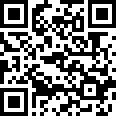The specification of Thermocycler PCR Real Time QPCR PCR analyzer PCR
July 08, 2023
A thermocycler is a laboratory instrument used for amplifying DNA sequences through the polymerase chain reaction (PCR) technique. It provides precise temperature control, allowing for the denaturation, annealing, and extension steps required for PCR to occur.
Real-time PCR, also known as quantitative PCR (qPCR), is a variation of PCR that allows for the quantification of DNA or RNA molecules in real-time during the amplification process. It uses fluorescent dyes or probes to measure the accumulation of PCR products as they are formed.
A PCR analyzer is a device that combines the functions of a thermocycler and a real-time PCR instrument. It is capable of performing both standard PCR and real-time PCR/qPCR assays. The analyzer typically includes a thermal block for temperature control, a fluorescence detection system, and software for data analysis.
The main features and specifications of a thermocycler PCR real-time qPCR PCR analyzer may include:
1. Temperature control: Precise control of temperatures for denaturation, annealing, and extension steps. Typically, a wide range of temperatures can be set, ranging from below room temperature to above 95°C.
2. Heating and cooling rates: The ability to rapidly heat and cool samples to minimize the time required for PCR cycles.
3. Sample capacity: The number of samples that can be processed simultaneously. This can range from a few samples to hundreds, depending on the specific model.
4. Block format: The type of sample block used for holding the PCR tubes or plates. Common formats include 96-well plates, 384-well plates, and individual tubes.
5. Fluorescence detection: The ability to detect and measure fluorescence signals emitted by fluorophores or probes during the PCR process. Multiple detection channels may be available to accommodate different fluorophores.
6. Excitation sources: The type of light source used to excite the fluorophores. Common sources include LED (light-emitting diode) or laser diodes.
7. Optical detection system: The system used to capture and analyze the fluorescence signals. This may include photodiodes, CCD (charge-coupled device) cameras, or PMTs (photomultiplier tubes).
8. Software and data analysis: User-friendly software for instrument control, data acquisition, and analysis of PCR results. This may include features such as threshold determination, quantification, and melt curve analysis.
9. Connectivity options: The ability to connect to a computer or network for data transfer and remote control.
10. Compatibility with PCR reagents and assays: The ability to work with a variety of PCR reagents, including DNA polymerases, primers, probes, and master mixes. The analyzer should also be compatible with different qPCR assay chemistries, such as SYBR Green or TaqMan.
Overall, a thermocycler PCR real-time qPCR PCR analyzer is a versatile instrument that combines the functions of a thermocycler and a real-time PCR instrument. It provides precise temperature control, fluorescence detection, and data analysis capabilities for a wide range of PCR applications, including gene expression analysis, genotyping, and pathogen detection.





